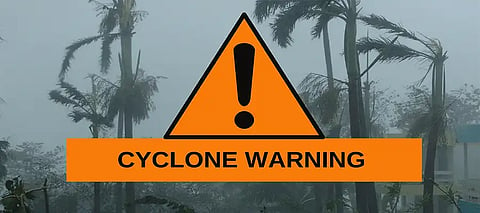

Although the India Meteorological Department (IMD) has already issued a red warning to several districts in Maharashtra and the Konkan coast due to a looming cyclonic storm in the Arabian Sea, the impacts of these shifting weather patterns are being experienced in northern India too, and Punjab is no exception. Although the danger that the cyclone poses at this time is localized to the western coast, northern states are experiencing calamitous thunderstorms, dust storms, and temperature swings.
North India, including Punjab, has experienced a string of hard thunderstorms and dust storms in the last few days. There were at least 59 deaths in the area caused by events associated with the storms, blamed by meteorologists for a rare convergence of multiple cyclonic circulations, copious moisture from the Arabian Sea and Bay of Bengal, and ongoing Western Disturbances—weather systems that usually retreat before summer but have lingered longer than usual this year.
A cyclonic flow currently over south Punjab is expected to produce light dust storms and thunderstorms, with rain likely over most of northwest India—Punjab as well—through May 27. These conditions are expected to bring a brief temperature dip, relief from summer heat but also the likelihood of localized damage through high winds and lightning.
Experts refer to a broader shift in weather patterns, whereby Western Disturbances—traditionally Mediterranean-originating cyclones—are now persisting into Indian summer. The shift is linked to global climatic changes like record-breaking Arctic heat and is reported to affect the timing and intensity of the Indian monsoon. The IMD also said that the southwest monsoon will shortly reach Kerala and would bring more twists in weather patterns across the country.
So far, the cyclone threat is focused over western India, yet Punjab and northern regions have a set of weather issues due to interconnected atmospheric systems. Citizens are asked to remain updated about IMD advisories and stay on alert for thunderstorms, dust storms, and potential loss of crops and infrastructure.